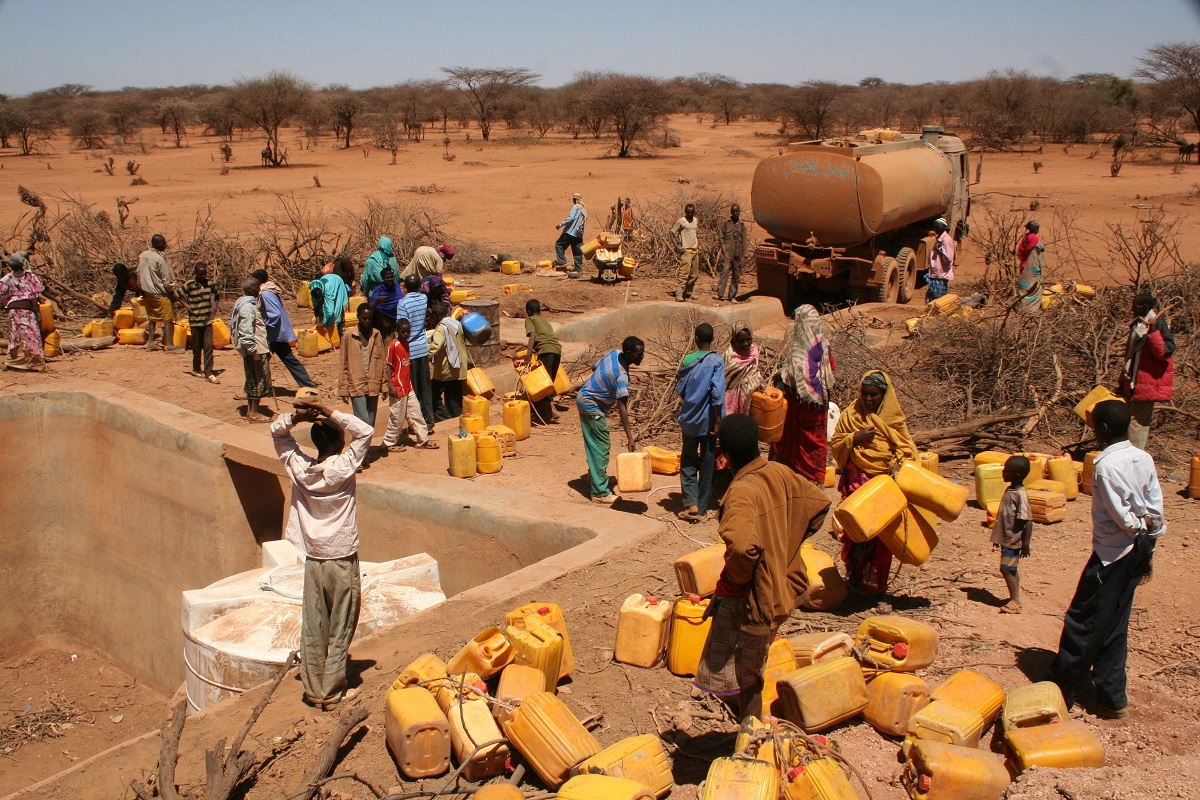Last week was the official launch of the G7 and G20 initiated InsuResilience Global Partnership. The partnership aims to better protect poor and vulnerable people against the impacts of disasters, by using climate and disaster risk finance and insurance solutions. It has a strong coalition of partners involved, including governments, private sector, UN and civil society organisations, such as the Start Network.
The general consensus is that the humanitarian system is slow and reactive. Risk financing tools can help us meet peoples’ needs by ensuring funding is there to enable early and faster responses to crises. Tools such as parametric (index-based) insurance, forecast-based financing or contingency funds can help by pre-positioning funding, which is triggered when indicator thresholds, such as a drop in soil moisture levels, are reached.
A key focus of these efforts is on governments; how can sovereigns be better prepared to manage disaster risks that threaten their most vulnerable communities? How can they become less reliant on late and unpredictable international humanitarian aid?
Governments can tackle these issues by investing in innovative risk pooling mechanisms, such as the African Risk Capacity or Caribbean Catastrophe Risk Insurance Facility.
This is an exciting direction of travel. We still need studies to understand whether these mechanisms are delivering the expected benefits to vulnerable communities. However, already there is strong consensus that in theory these tools could bring faster, more coordinated assistance to vulnerable people (for more information on this topic, read Dull Disasters).
What has struck me most is that in the risk financing world, international humanitarian aid has come to be associated with failure. The subtext is that, if as a Government you don’t plan properly, and don’t manage your risks ‘ex-ante’, then you will need to resort to depending on ‘ex-post’ international humanitarian aid which will be late, uncoordinated and won’t meet your needs. It is perceived as a failure in risk management.
As someone representing an international network of humanitarian NGOs, this is a little uncomfortable to hear. But is it true? I would argue that it is not. We need to bring international humanitarian assistance into view as a potential viable part of climate risk management strategies, for the following two reasons:
1. Not all governments can manage their own disaster risks
This is an obvious point but one worth making. It is impressive and encouraging that governments such as Senegal, Mali, Niger and Mauritania have paid for their own premiums to join schemes such as the African Risk Capacity (ARC) for the past few years. However, these finance instruments cover a critical but very small proportion of the needs. There are many other governments out there who would like to join the ARC program, but cannot afford to.
Many countries are highly dependent on the $26 billion dollars1 of international funding channelled globally to deliver assistance to vulnerable people affected by crises. Most of this is not in the form of direct budgetary support to governments, but instead flows through UN, NGO, private sector and other humanitarian intermediaries.
Whilst tools such as sovereign premium subsidies are important (like the ARC program and the Caribbean Catastrophe Risk Insurance Facility), it is unrealistic to assume that all of this assistance can (or indeed should) be directly delivered by sovereigns. Earlier and faster financing enabled through better risk management will only work if there are systems in place that will then deliver effective humanitarian action. In many areas of the world - particularly fragile states like Somalia, South Sudan or Yemen - communities and duty-bearers are simply overwhelmed by the volume of need. The complexity of today’s crises requires many different actors, working together to both reduce risks and meet these needs.
Therefore, by just reforming sovereign assistance we are only grasping half of the picture, as international aid will still come in late and fragmented. We should do both sides of the coin at once to bring about the wholesale change that is required.
2. International humanitarian assistance doesn’t have to be ex-post, late and unpredictable.
The principles of risk financing can and should be applied to international humanitarian aid. This includes:
- Modelling and understanding risks
- Establishing clear plans to respond to those risks
- Ensuring pre-positioned funding is in place
Organisations such as the World Food Programme (WFP) have been modelling the possibilities through initiatives such as FoodSECuRE, and the Red Cross through their Forecast Based Financing pilots.
At the Start Network have been working for several years on the design of two initiatives that apply risk financing principles and tools (including but not limited to insurance) to enable donors and NGOs together to deliver more predictable, timely response to droughts.
There is a huge need to reform the way in which international humanitarian assistance is delivered so that it can be more timely, predictable and effective. This $26 billion system can become part of the InsuResilience solution, rather than part of the problem. This is no small task, it will require dedicated commitment from the many players in the system; donors, UN, NGOs, research institutions, private sector and sovereigns to pilot and gather evidence for these new ways of working. Many of these players are already part of InsuResilience. The potential benefits of this reform, when combined with improved sovereign-led risk ownership and management, is a force-multiplier for the partnership.
So here is my request to the partners of InsuResilience; let’s not treat international humanitarian aid as a symbol of failure. Let’s apply risk financing approaches, tools and resources to enable it to reform and become part of the InsuResilience solution.
Read more about the Drought Risk Financing facility, a finance instrument which is currently being piloted in two countries.
Read more about The ARC Replica programme, a climate-based risk financing tool which was made to help African Union states manage natural disasters better.
1 $26 billion quoted in the Global Humanitarian Assistance report 2015, released by Development Initiatives is available to read here.

